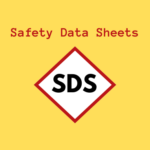Nurturing Continuous Improvement with QMS Software

In today’s dynamic business landscape, organizations continually seek ways to enhance their operations, meet evolving industry standards, and exceed customer expectations. The pursuit of excellence isn’t a one-time endeavor but an ongoing journey. Quality Management Systems (QMS) software is a powerful ally in this quest, as it not only ensures adherence to quality standards but also supports a culture of continuous improvement within organizations. In this blog post, we will explore how QMS software fosters a culture of continuous improvement, helping organizations identify and address areas for enhancement.
The Essence of Continuous Improvement
Continuous improvement is a philosophy that encourages organizations to constantly evaluate their processes, products, and services with the goal of making incremental enhancements. It’s about fostering a culture where everyone, from employees to leadership, is actively engaged in identifying opportunities for betterment. The key components of continuous improvement include:
- Data-Driven Decision Making: Leveraging data to pinpoint areas for improvement, track progress, and measure the impact of changes.
- Cross-Functional Collaboration: Involving team members from various departments to gather diverse insights and ideas for improvement.
- Feedback Integration: Encouraging employees to provide feedback, share suggestions, and report issues as part of a transparent feedback loop.
- Structured Processes: Implementing structured methods, such as Plan-Do-Check-Act (PDCA) or Six Sigma, to guide the improvement journey.
QMS Software as a Catalyst for Continuous Improvement
Quality Management Systems (QMS) software plays a pivotal role in nurturing a culture of continuous improvement within organizations. Here’s how:
1. Data Analysis for Informed Decision-Making
QMS software provides a robust platform for collecting and analyzing data related to quality and compliance. This data is invaluable for identifying patterns, trends, and potential areas for improvement. By offering real-time insights and historical data, QMS software empowers organizations to make informed, data-driven decisions. These decisions can lead to process optimization, product enhancements, and better compliance with industry standards.
2. Streamlined Document Management
Efficient document management is a cornerstone of quality and compliance. QMS software simplifies the process of creating, revising, and archiving documents. It ensures that the latest versions of documents are readily accessible to the relevant personnel, reducing the risk of errors caused by outdated information. This streamlined document management not only supports compliance but also enhances the overall quality of operations.
3. Cross-Functional Collaboration
Collaboration is at the heart of continuous improvement. QMS software fosters cross-functional collaboration by providing a centralized platform where employees from different departments can share their observations, suggestions, and experiences. This collaboration promotes a diverse range of insights, enabling organizations to identify improvement opportunities that might not be apparent within departmental silos.
4. Issue and Non-Conformance Management
QMS software includes modules for issue and non-conformance management. This allows organizations to systematically track and resolve quality issues, deviations, or non-conformances. The software streamlines the process of reporting, investigating, and resolving these issues, ensuring that root causes are addressed, and preventive actions are implemented. This structured approach prevents recurring problems and contributes to continuous improvement efforts.
5. Workflow Automation
Efficiency is a critical component of continuous improvement. QMS software automates many processes, reducing the time and effort required to complete tasks. Automated workflows ensure that tasks are consistently executed and recorded, reducing the risk of errors and delays. This efficiency frees up valuable resources for strategic improvement initiatives.
6. Auditing and Compliance Management
QMS software includes auditing and compliance management capabilities, ensuring that organizations adhere to industry standards and regulations. By automating audit processes and providing a central repository for compliance documentation, the software simplifies compliance efforts. This proactive approach helps organizations identify and rectify potential compliance issues, furthering the culture of continuous improvement.
Conclusion: Elevating Excellence with Trackmedium QMS
In the pursuit of continuous improvement, QMS software acts as a catalyst for organizations looking to enhance their processes, products, and services. It empowers data-driven decision-making, fosters cross-functional collaboration, streamlines document management, and automates critical processes. For organizations committed to nurturing a culture of continuous improvement, Trackmedium stands out as a reliable ally.
Trackmedium provides QMS software that offers a comprehensive suite of tools and features designed to streamline quality and compliance management while promoting a culture of continuous improvement. By leveraging Trackmedium QMS, organizations can elevate their excellence and adapt to the ever-evolving demands of their industries. Trackmedium QMS is not just a software solution; it’s a partner in the journey toward operational perfection and a culture of continuous improvement.


















